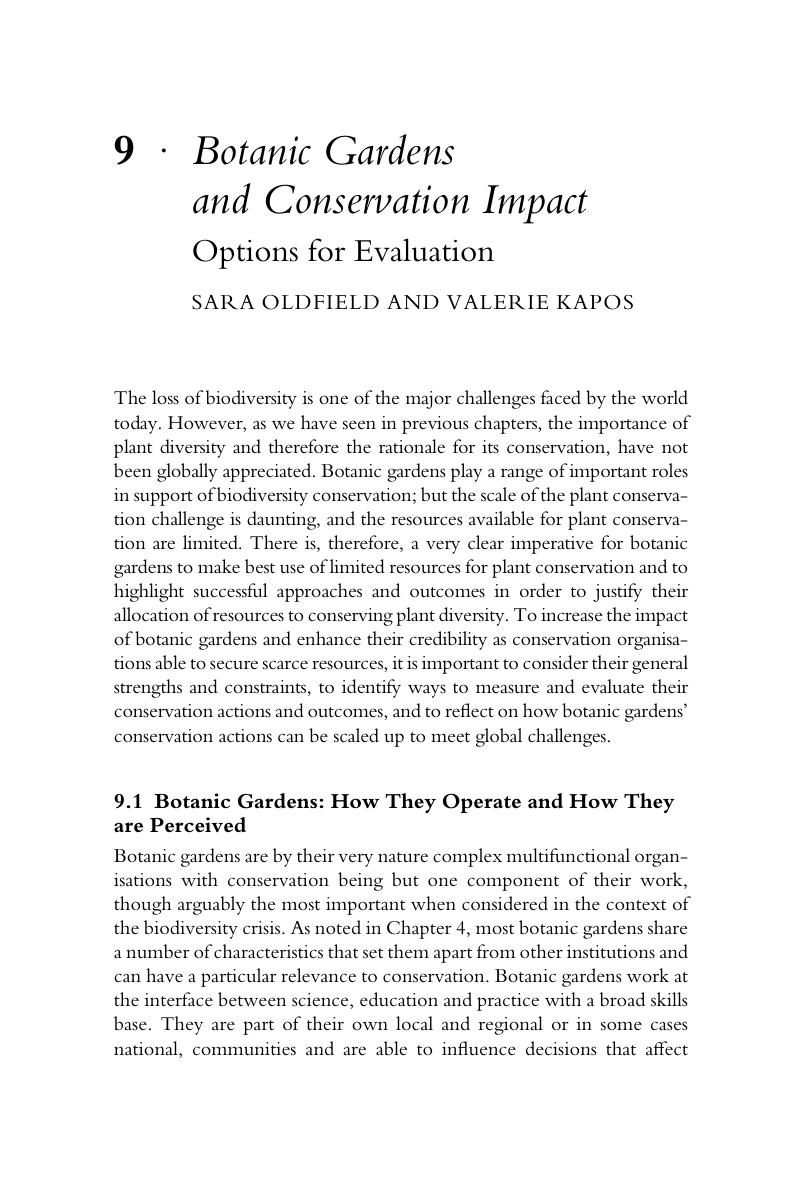Book contents
- Plant Conservation Science and PracticeThe Role of Botanic Gardens
- Ecology, Biodiversity and Conservation
- Plant Conservation Science and Practice
- Copyright page
- Contents
- Contributors
- Foreword
- Preface
- Acknowledgements
- 1 Mounting a Fundamental Defence of the Plant Kingdom
- 2 Using DNA Sequence Data to Enhance Understanding and Conservation of Plant Diversity at the Species Level
- 3 Conservation Assessments and Understanding the Impacts of Threats on Plant Diversity
- 4 The Role of Botanic Gardens in In Situ Conservation
- 5 The Role of Botanic Gardens in Ex Situ Conservation
- 6 The Role of Botanic Gardens and Arboreta in Restoring Plants
- 7 Botanic Gardens and Solutions to Global Challenges
- 8 Cultivating the Power of Plants to Sustain and Enrich Life
- 9 Botanic Gardens and Conservation Impact
- 10 Conclusions
- Index
- References
9 - Botanic Gardens and Conservation Impact
Options for Evaluation
Published online by Cambridge University Press: 30 August 2017
- Plant Conservation Science and PracticeThe Role of Botanic Gardens
- Ecology, Biodiversity and Conservation
- Plant Conservation Science and Practice
- Copyright page
- Contents
- Contributors
- Foreword
- Preface
- Acknowledgements
- 1 Mounting a Fundamental Defence of the Plant Kingdom
- 2 Using DNA Sequence Data to Enhance Understanding and Conservation of Plant Diversity at the Species Level
- 3 Conservation Assessments and Understanding the Impacts of Threats on Plant Diversity
- 4 The Role of Botanic Gardens in In Situ Conservation
- 5 The Role of Botanic Gardens in Ex Situ Conservation
- 6 The Role of Botanic Gardens and Arboreta in Restoring Plants
- 7 Botanic Gardens and Solutions to Global Challenges
- 8 Cultivating the Power of Plants to Sustain and Enrich Life
- 9 Botanic Gardens and Conservation Impact
- 10 Conclusions
- Index
- References
Summary

- Type
- Chapter
- Information
- Plant Conservation Science and PracticeThe Role of Botanic Gardens, pp. 219 - 235Publisher: Cambridge University PressPrint publication year: 2017
References
- 1
- Cited by



